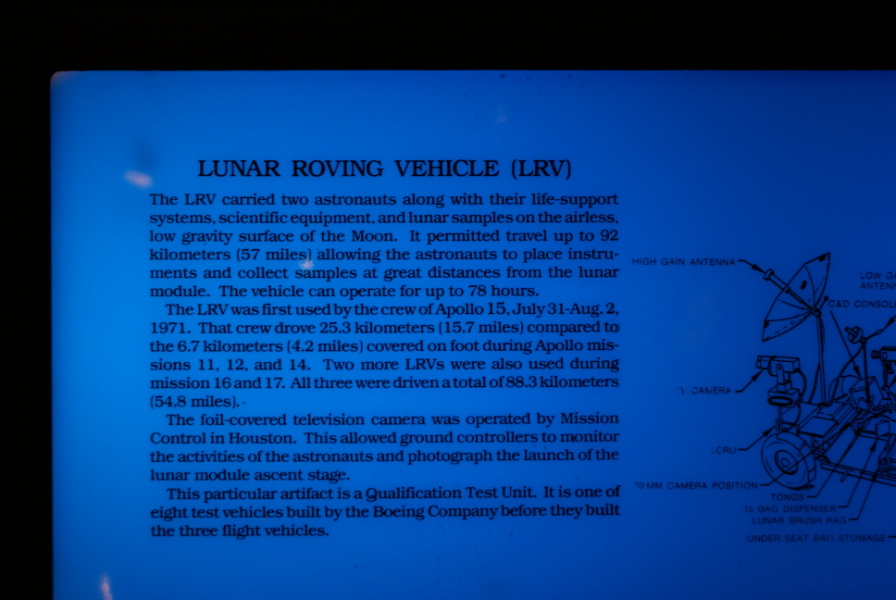| Prev |
heroicrelics.org National Air & Space Museum Site Index Lunar Roving Vehicle Gallery |
Next |
dsc31428.jpg
The sign accompanying the Lunar Roving Vehicle.
It reads
Lunar Roving Vehicle (LRV)
The LRV carried two astronauts along with their life-support systems, scientific equipment, and lunar samples on the airless, low gravity surface of the Moon. It permitted travel up to 92 kilometers (57 miles) allowing the astronauts to place instruments and collect samples at great distances from the Lunar Module. The vehicle can operate for up to 78 hours.
The LRV was first used by the crew of Apollo 15, July 31-Aug. 2, 1971. That crew drove 25.3 kilometers (15.7 miles) compared to the 6.7 kilometers (4.2 miles) covered on foot during Apollo missions 11, 12, and 14. Two more LRVs were also used during missions 16 and 17. All three were driven a total of 88.3 kilometers.
The foil-covered television camera was operated by Mission Control in Houston. This allowed ground controllers to monitor the activities of the astronauts and photograph the launch of the Lunar Module ascent stage.
This particular artifact is a Qualification Test Unit. It is one of eight test vehicles built by the Boeing Company before they built the three flight vehicles.
I'm uncertain as to where the "57 mile" figure originated; perhaps the battery charge under ideal conditions could support traveling that distance.
Each of the three Apollo missions on which the LRV flew featured three EVAs, with an LRV traverse on each EVA. The longest single traverse (on Apollo 17) was 12.5 miles, reaching a maximum distance of 4.7 miles away from the Lunar Module. The astronauts were not allowed to travel farther away from the LM than the distance they could walk (if the LRV broke down) with the remaining levels of oxygen and cooling water in their spacesuit's PLSS.

| Time picture taken | Tue Jun 19 13:41:30 2007 |
| Location picture taken |
Apollo to the Moon Gallery National Air & Space Museum Washington, DC |
| Prev |
heroicrelics.org National Air & Space Museum Site Index Lunar Roving Vehicle Gallery |
Next |